Even by our own standards at Total Football Analysis, this tactical theory article is on the niche side, I understand.
However, details matter, and some teams pay a lot of attention to how they kick off.
This isn’t the majority — in fact, when researching this article and watching an untold amount of kick-off “routines” from various teams, it was surprising to see the lack of direction or imagination.
Yes, it is a chance to get the ball down and begin the possession phase, but it’s so much more fun to see teams try and instantly gain an attacking advantage.
On the flip side of this, it was surprising to see the sheer volume of teams who simply pump the ball forward with a diagonal pass, aimlessly hoping to pick out a winger surging forward — a routine that wouldn’t look out of place on a cold Sunday morning between two pub teams.
Such an approach often leads to a turnover of possession, but in a best-case scenario, it may lead to the ball being headed out of play, and as a result, that side may gain a throw-in inside the opposition half.
This tactical analysis will look to highlight five different routines that are either currently being used by teams or have been used by teams in previous seasons.
Some are simpler and structured, whilst others are more daring and demonstrate teams looking to create goalscoring opportunities immediately.
Liverpool Kick Off Routines
While they certainly don’t do this every time, Liverpool kick off tactics typically strike a diagonal ball forward.
In fact, there are a lot of teams who look to use these tactics with a similar goal.
It’s not some hopeful ball aiming to get in behind the opposition full-back.
Still, instead, it is a targeted approach to secure possession in an advanced position inside the opposition’s half immediately from kick-off.
Liverpool are particularly effective with this, and this routine was strikingly effective in their recent second-leg Champions League fixture against Inter Milan.
We can see the set-up in the following analysis.
Firstly, centre-back Joël Matip is stood deep by himself, well inside his own half, whilst there is a cluster of four Liverpool players positioned wide on the left flank.
It is no secret what Liverpool will do here, but Jürgen Klopp trusts his side’s counter-pressing ability enough to know they can secure possession with this approach regardless.
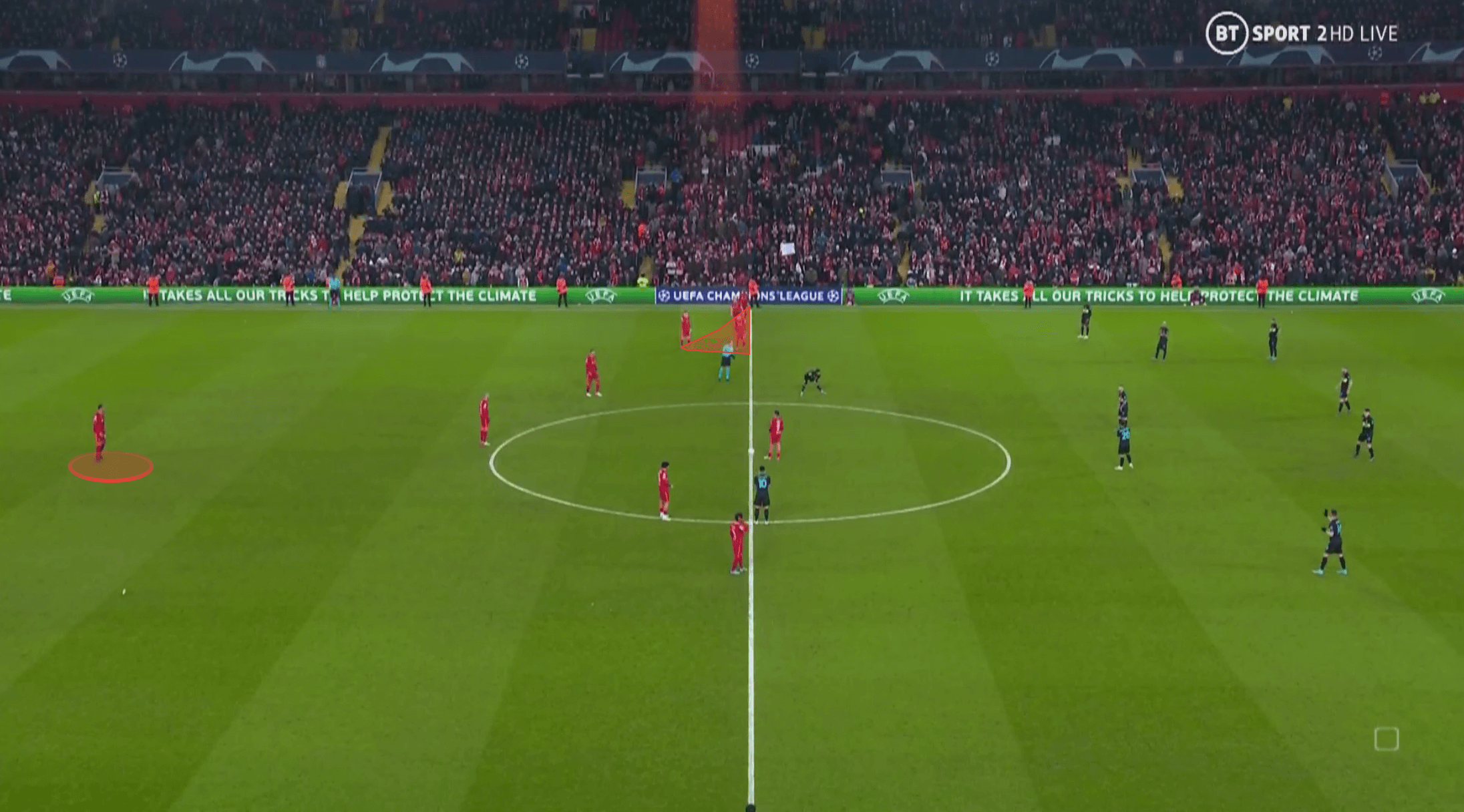
As the ball is played back, Matip drills a low-trajectory diagonal long pass towards the Inter Milan right wing-back whilst the cluster of four players pushes forward, remaining in close proximity.
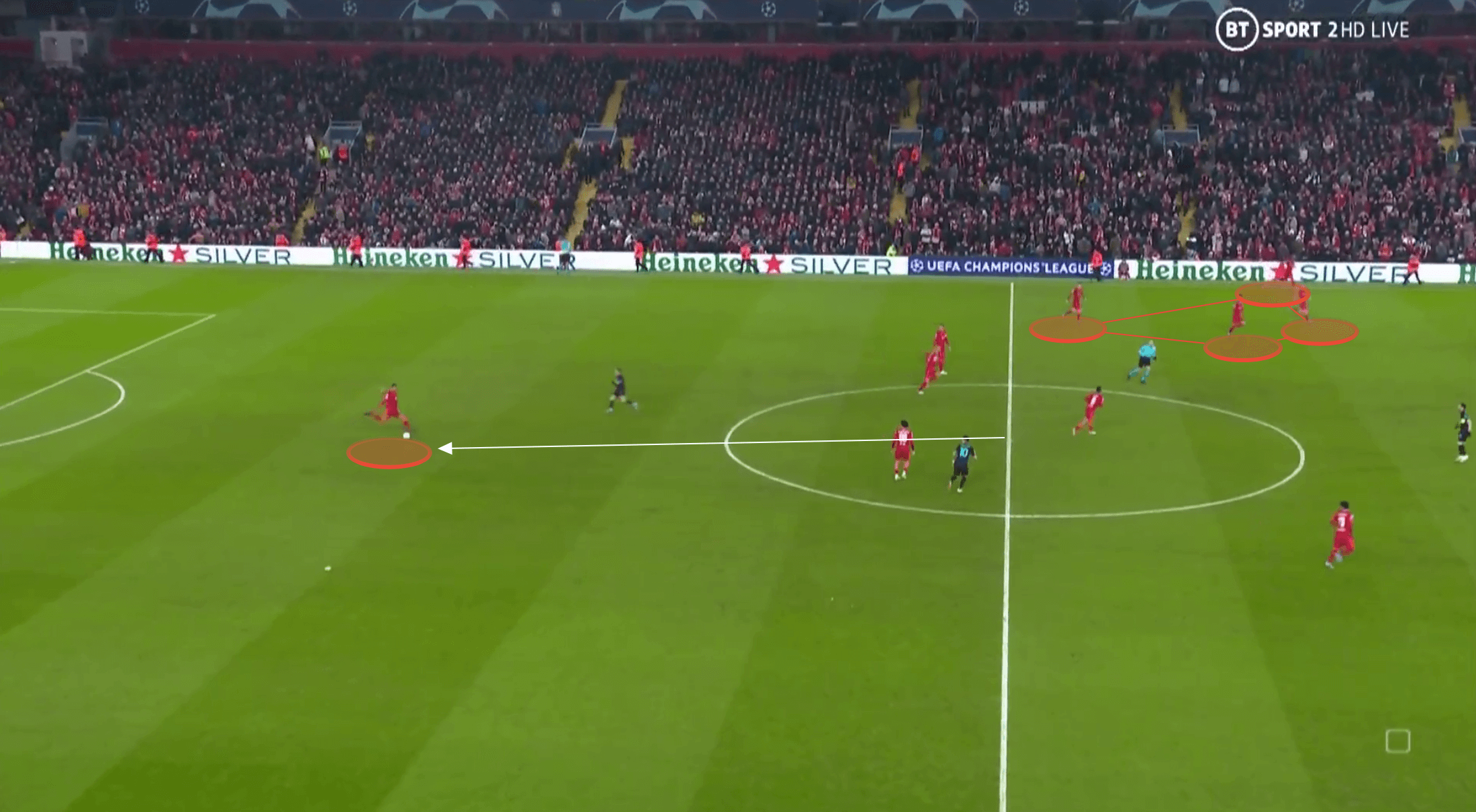
The Inter right wing-back heads the ball as expected, having been given few other options, such was the height and pace of the ball, and Liverpool react well to the second ball, quickly securing possession in midfield.
Matip immediately pushes forward, joining the rest of his defence.
We can see this in the next image, and it’s noticeable how Liverpool doesn’t just have secure possession inside the Inter half now, but they have their structure immediately in place.
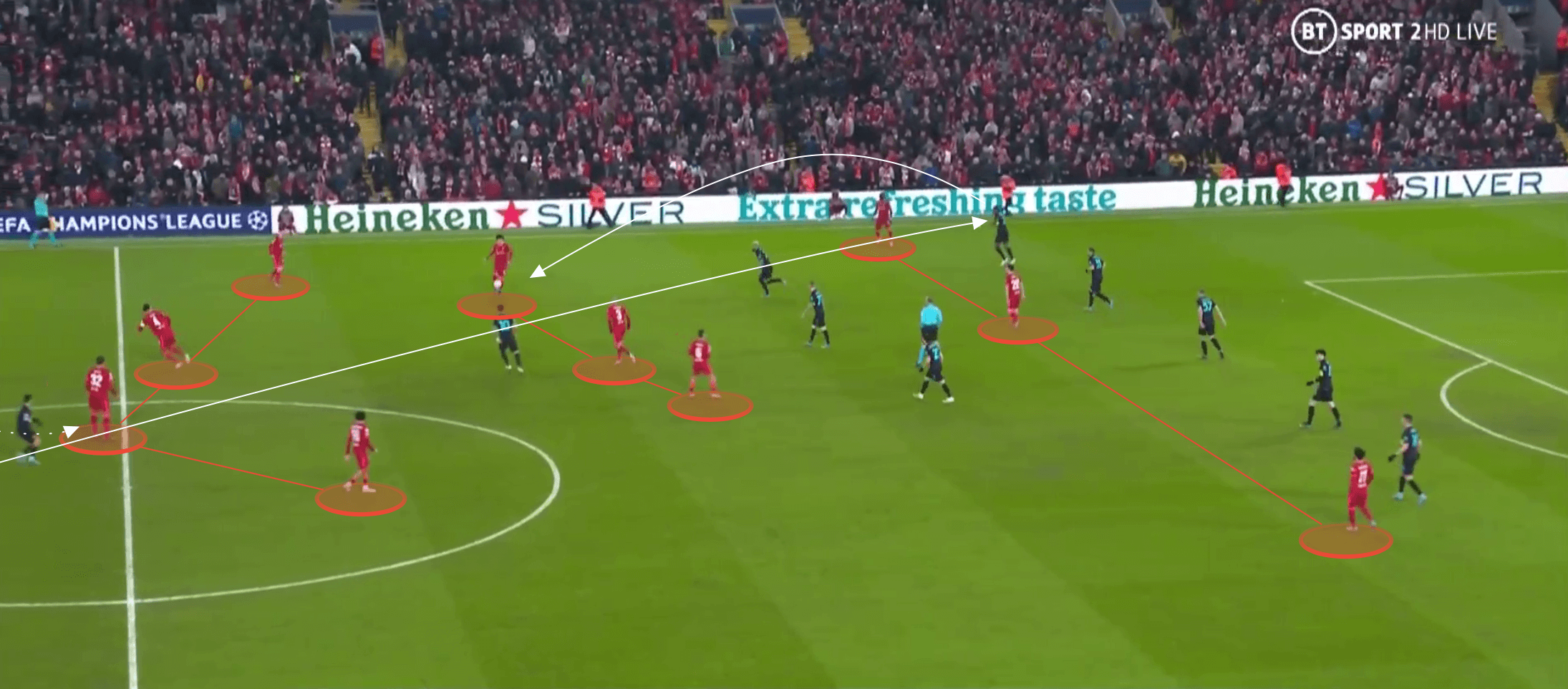
Watford Kick Off Routines
Watford haven’t had the most impressive season by any means, sitting down at the other end of the table to Liverpool.
Since Roy Hodgson’s appointment, it’s been noticeable how much more organised and structured this team is, and whilst they are fully in a relegation dogfight, they may well pull themselves out of it.
Given Hodgson’s reputation for organisation, this isn’t surprising, and Watford kick off tactics are Hodgson-esque in its simplicity but nevertheless effective.
Watford quickly play backwards and circle the ball out to the left flank.
There isn’t necessarily a set pattern after this, but it’s nearly always focused on this one side of the pitch.
If there is no immediate pass option on for the left-back then he generally looks to clip the ball down the line.
Like Liverpool, Watford will pack players towards this side of the pitch as this pattern occurs.
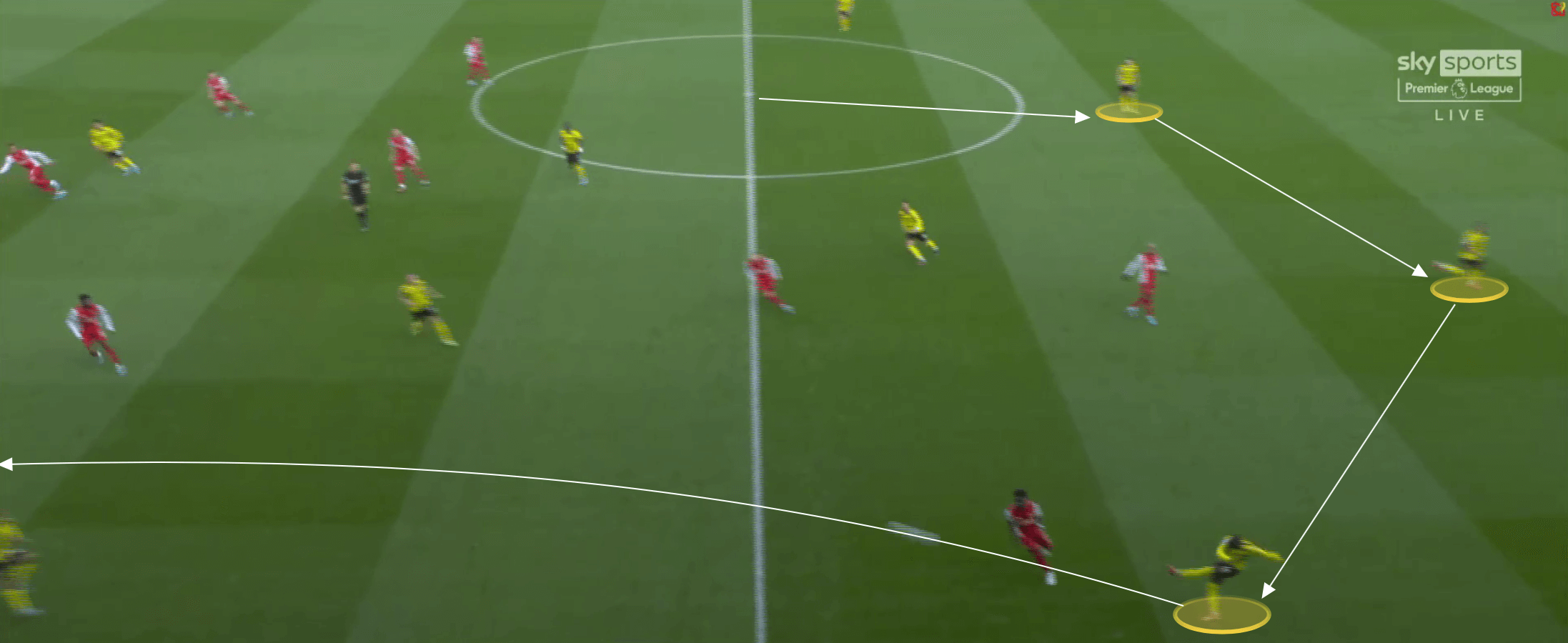
The example previously shown is from Watford’s recent game against Arsenal.
As the pass landed in Arsenal’s half, Watford could secure possession before creating the opportunity to play Emmanuel Dennis in behind, albeit on this occasion he was offside.
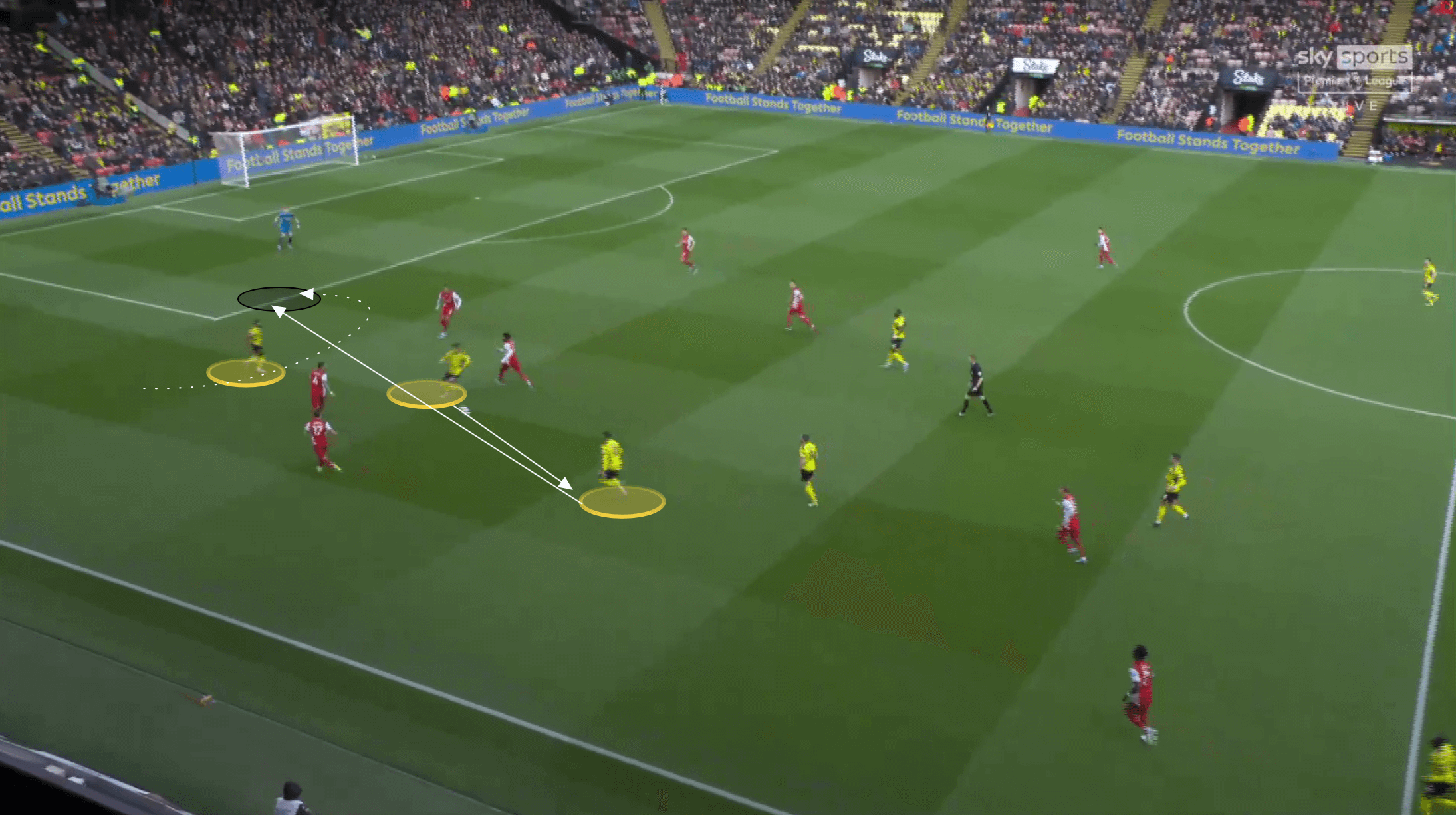
We can see a similar initial pattern in the following sequence of images.
However, on this occasion, the ball is played inside to central midfielder, Tom Cleverley.
Ahead of the midfielder, Watford once more had numbers close to one another.
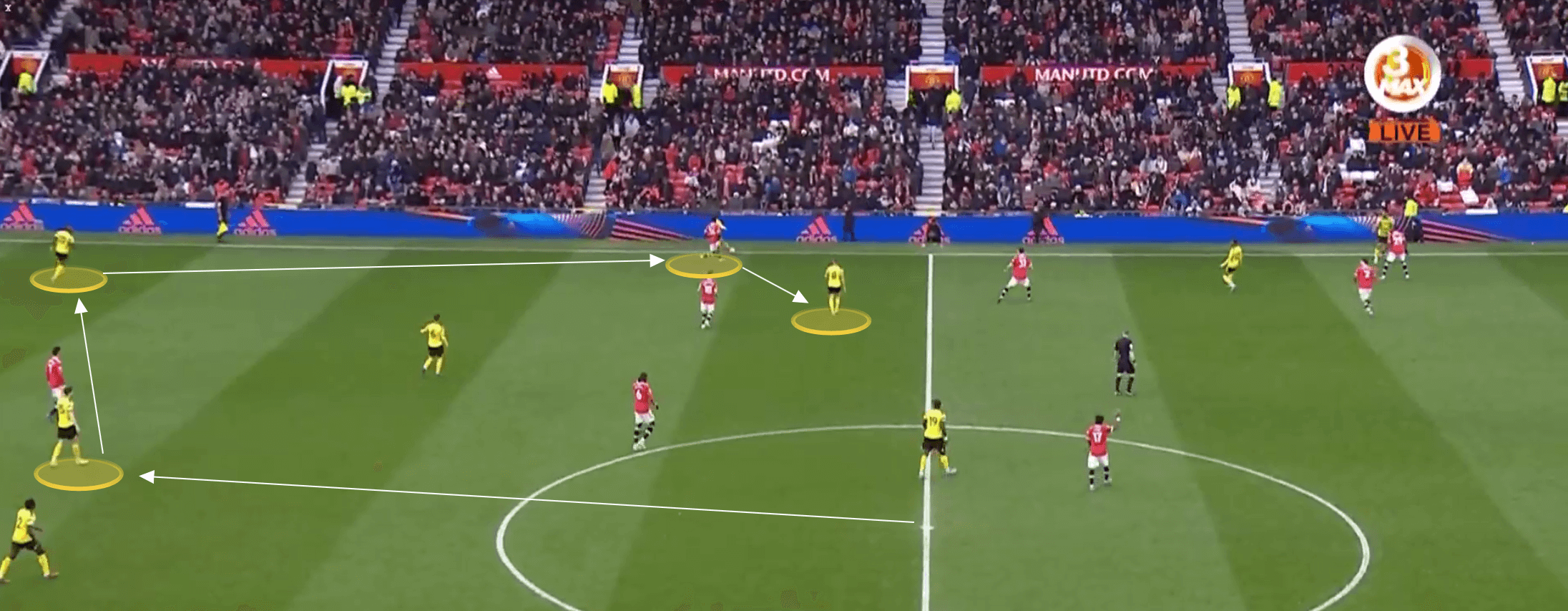
A swift pass forward and left-back Hassane Kamara continued to overlap down the left-flank whilst João Pedro vacated this area of the pitch, providing space for the pass in behind to the overlapping Kamara.
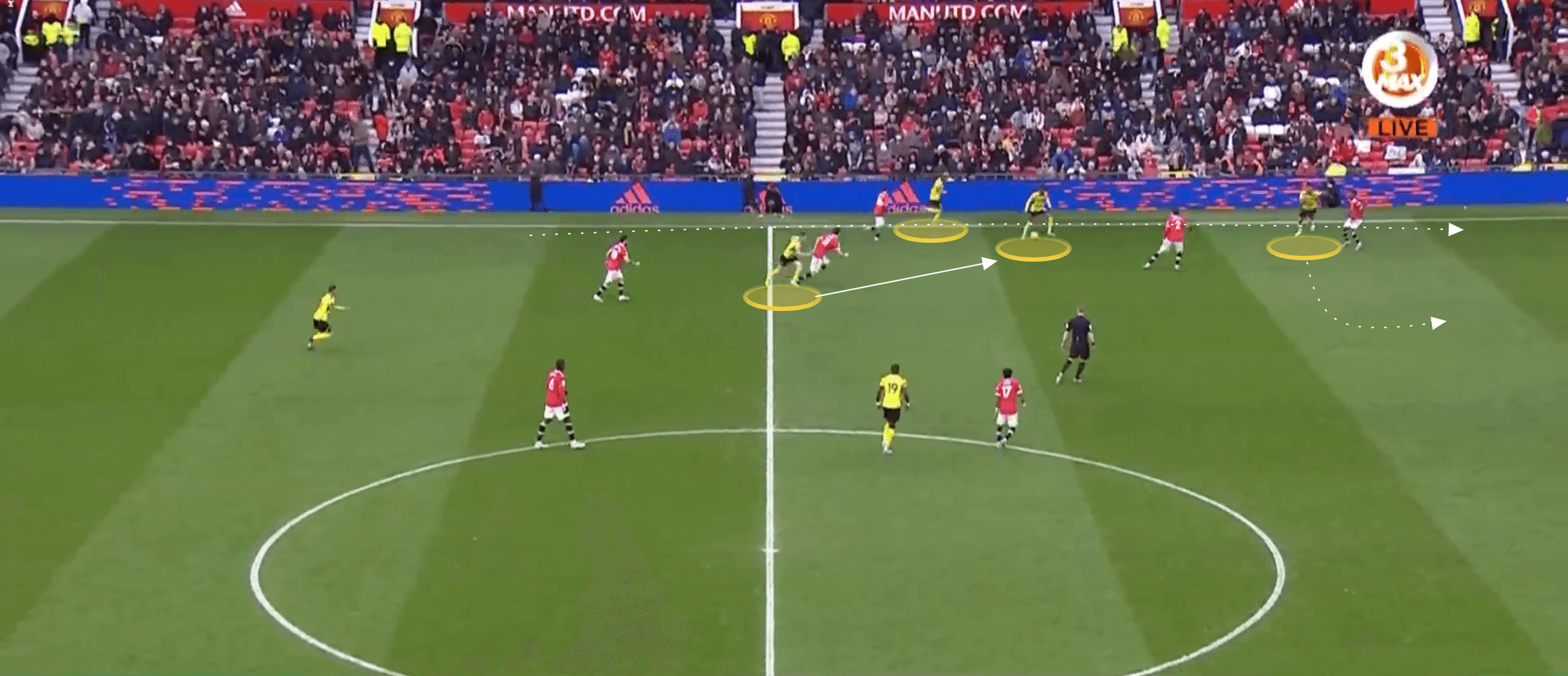
We can see the pass and run in the next image, with Watford’s targeting of this flank being successful once more.
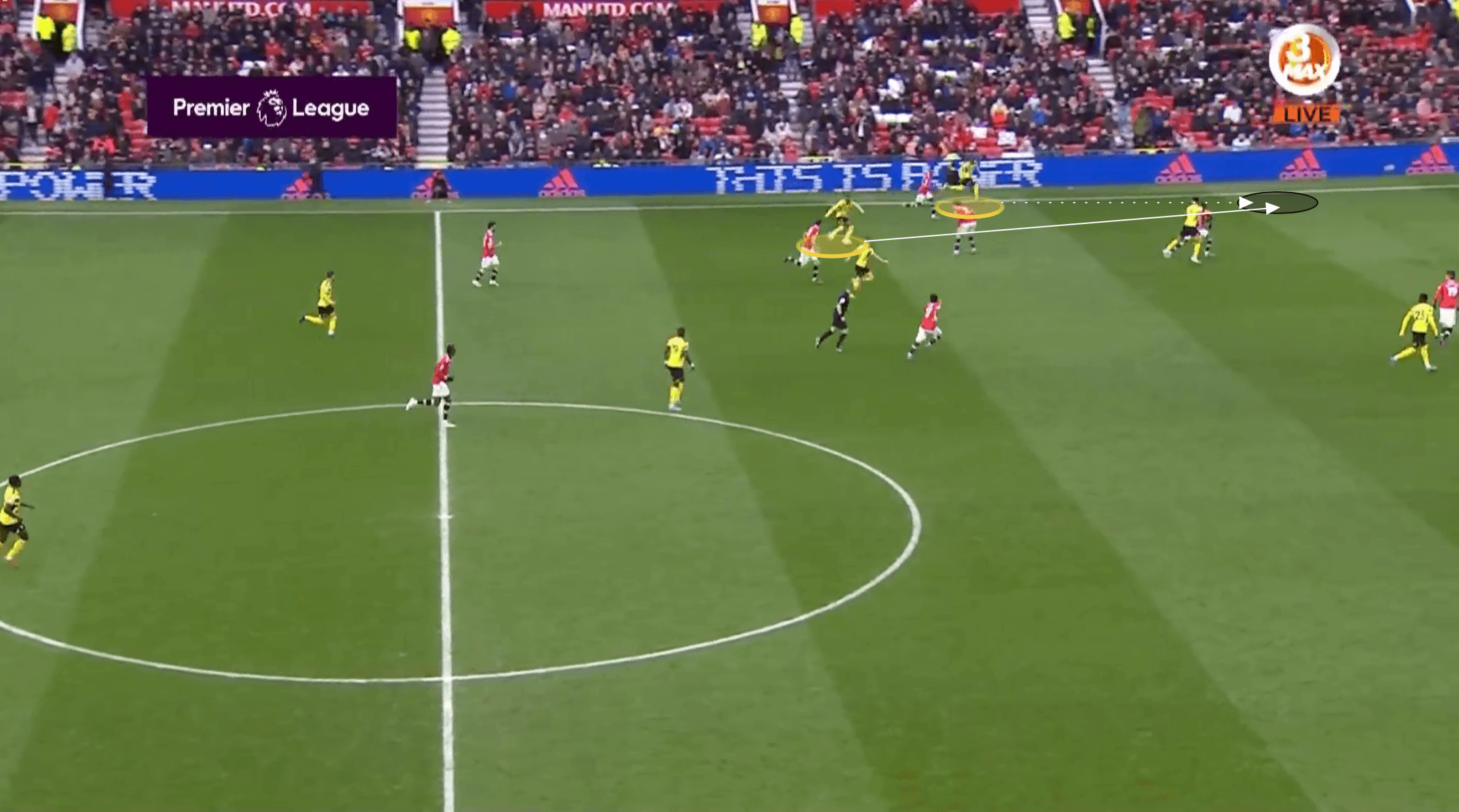
Atlético Madrid Kick Off Routines
Atlético Madrid has a simple but highly effective routine from a kick-off, which doesn’t create any goalscoring opportunities.
However, it is a smart and simple way of quickly breaking past an aggressive opposition press.
The player taking kick-off will play the ball back to a teammate below the centre circle before initially running towards the opposition goal.
However, after only a few steps, he will check back inside to where he can receive the ball once more — now beyond the first line of the opposition press.
We can see this in action against Manchester United in the next image.
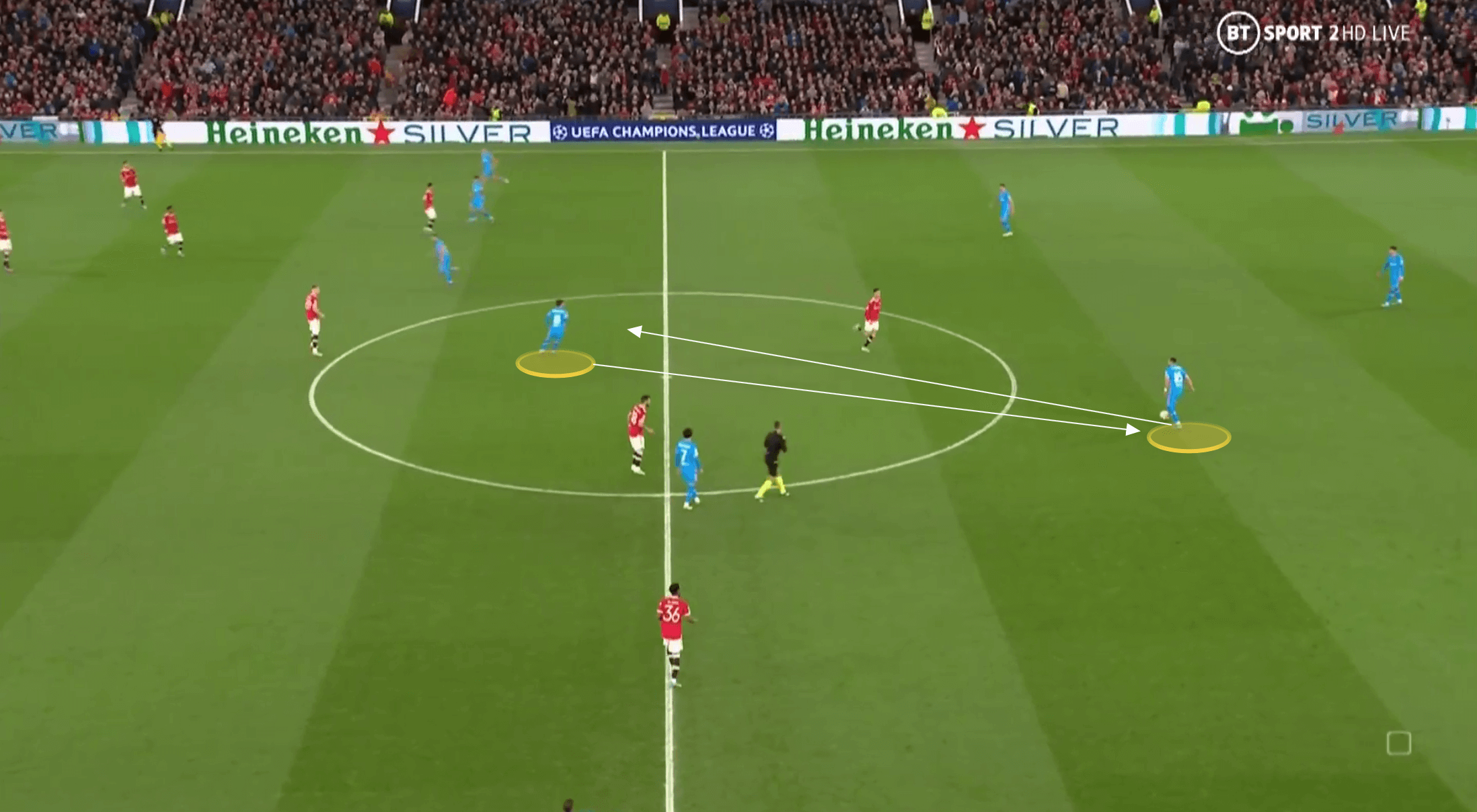
This wasn’t as impressive as it can be here because United is pressing only with one.
However, in the following image, we see the same routine but against Real Betis, and we can observe how much more effective it is this time, with the pass immediately taking out the press of the two Betis forwards.
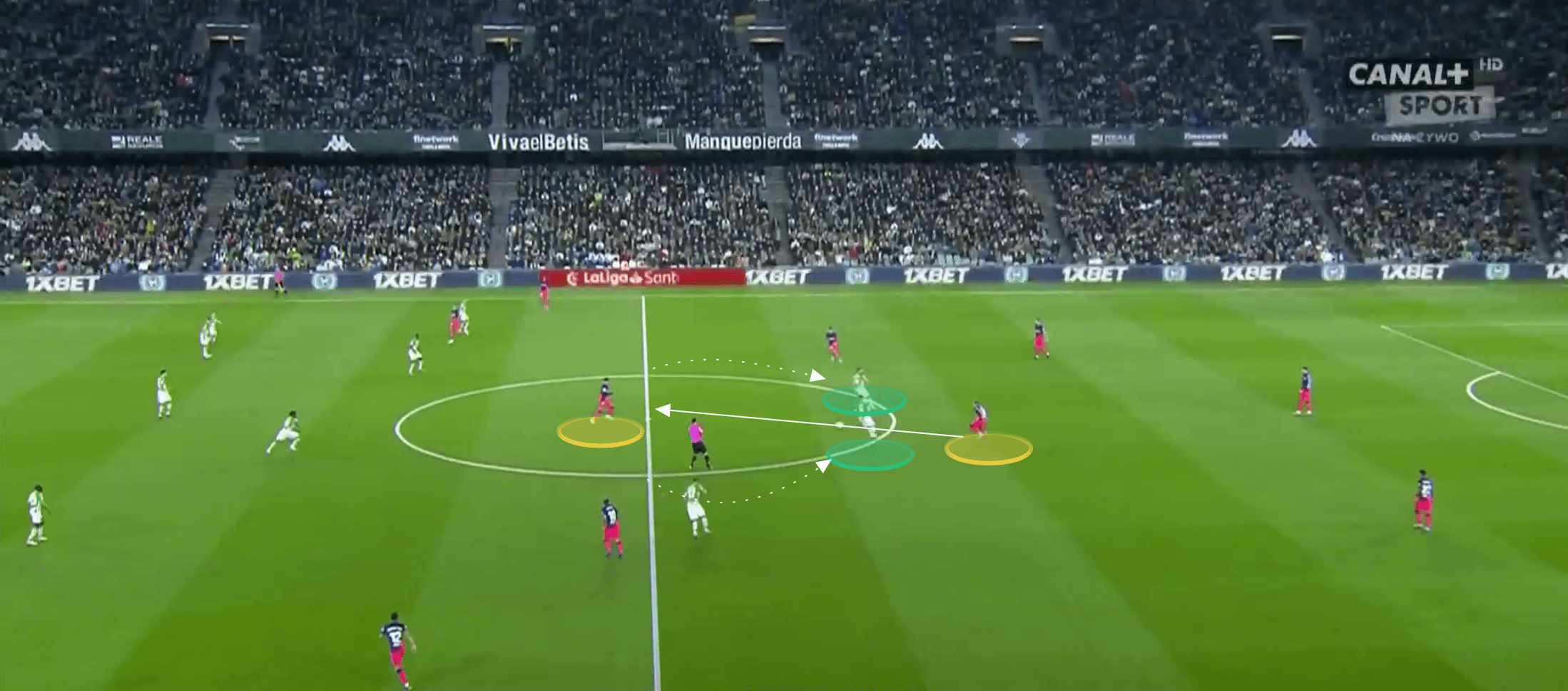
Once back on the ball, there is more space for the original kick-off taker to surge forward with the ball, given two players have already been taken out by the wall-pass, and with Atlético’s attackers pushing forward off the ball, they have occupied the opponent’s defence and created space for the ball-carrier to drive forward more freely.
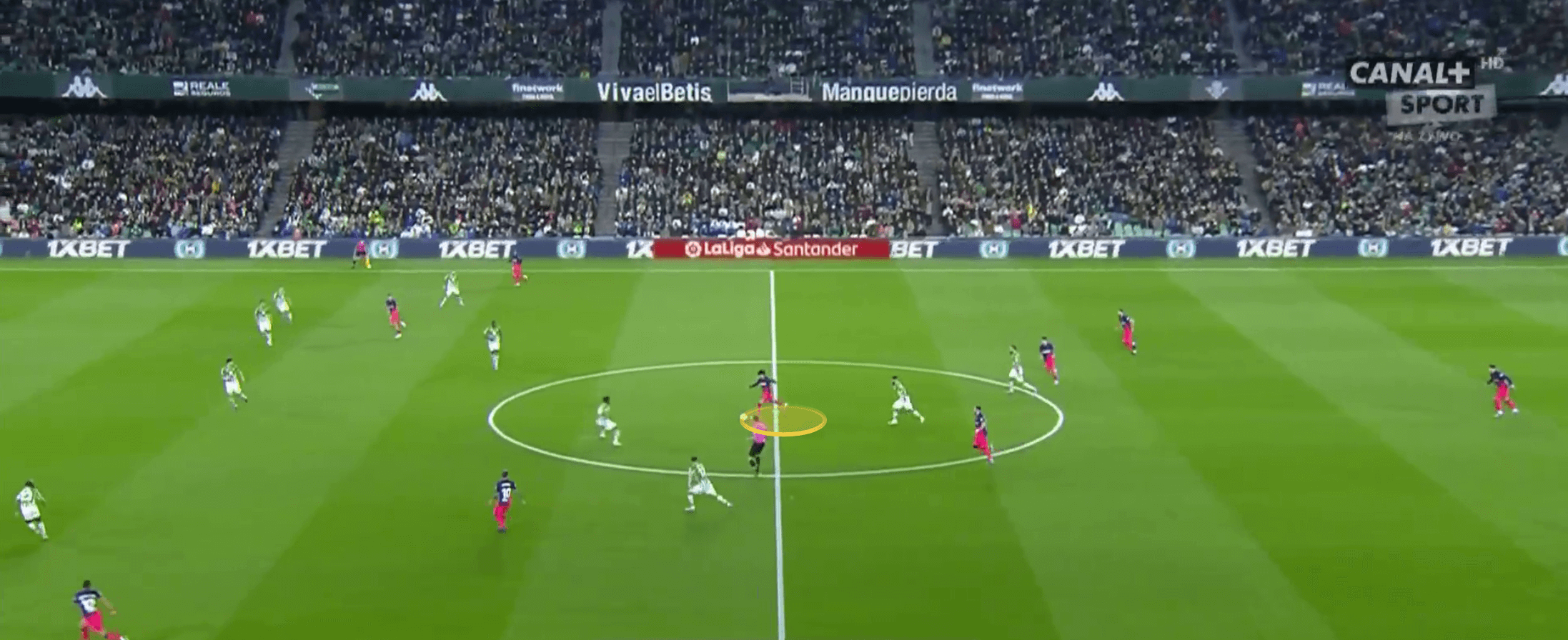
AC Milan Kick Off Routines
Moving onto more direct approaches that have led to goals scored, we will look at two examples.
The first comes from a truly direct style, almost reminiscent of something from youth football, but that led to the quickest goal scored in Serie A history, courtesy of AC Milan’s Rafael Leão.
Serie A Fastest Goal Ever
Immediately from kick-off, Milan looked to break forward, driving into the Sassuolo half.
Whilst the ball carrier is highlighted in the following image, as is goalscorer Rafael Leão to his left, we can see that Milan committed six attackers to this move, with this approach causing Sassuolo’s defence to be immediately stretched, which would pay dividends only seconds later.
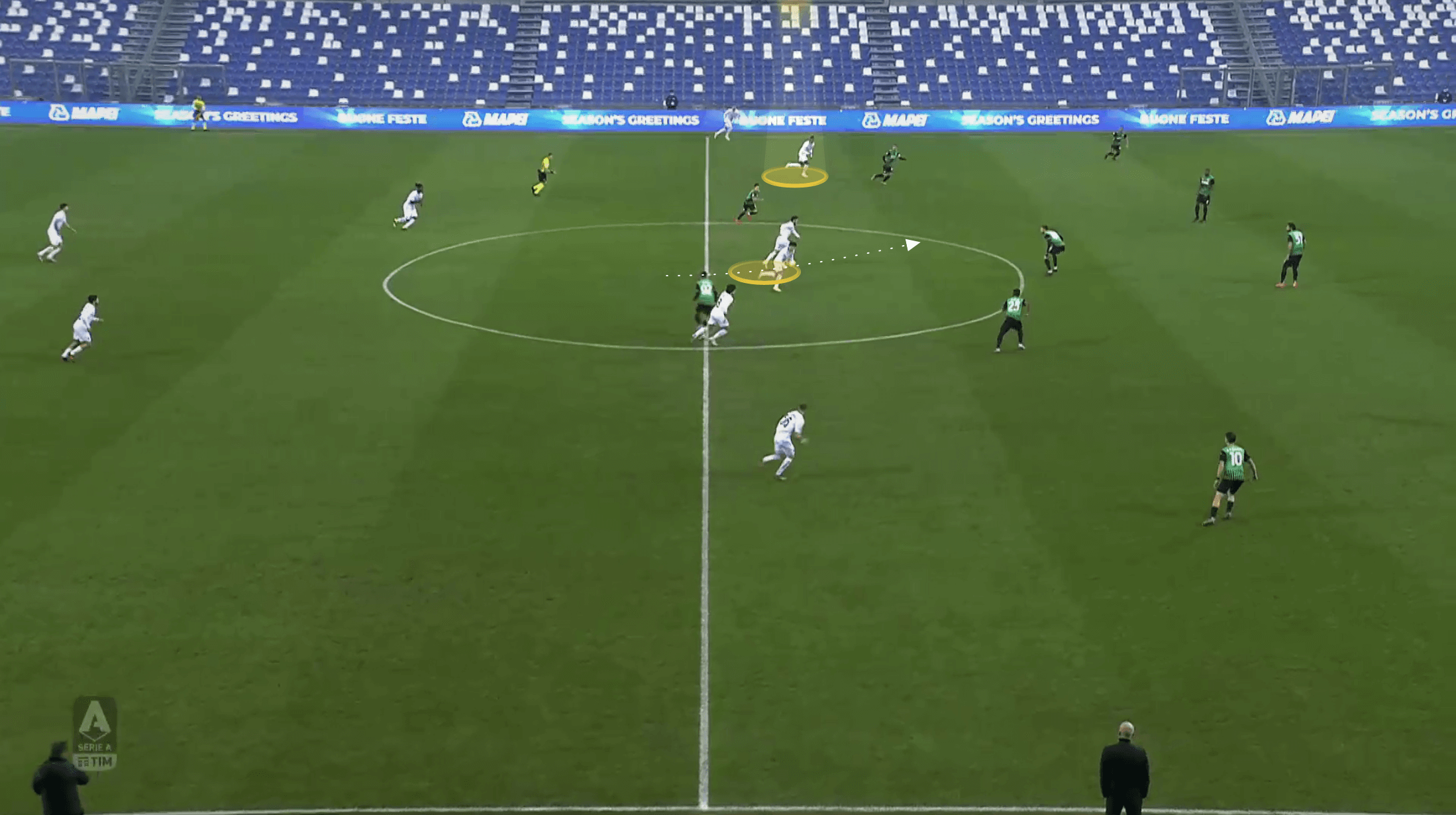
After driving a further 15 yards on the ball, the ball carrier was able to split Sassuolo’s defence with a pass between their right centre-back and right-back.
Rafael Leão was able to steal inside in between the two and latch onto this through pass before putting Milan ahead within six seconds of the game starting.
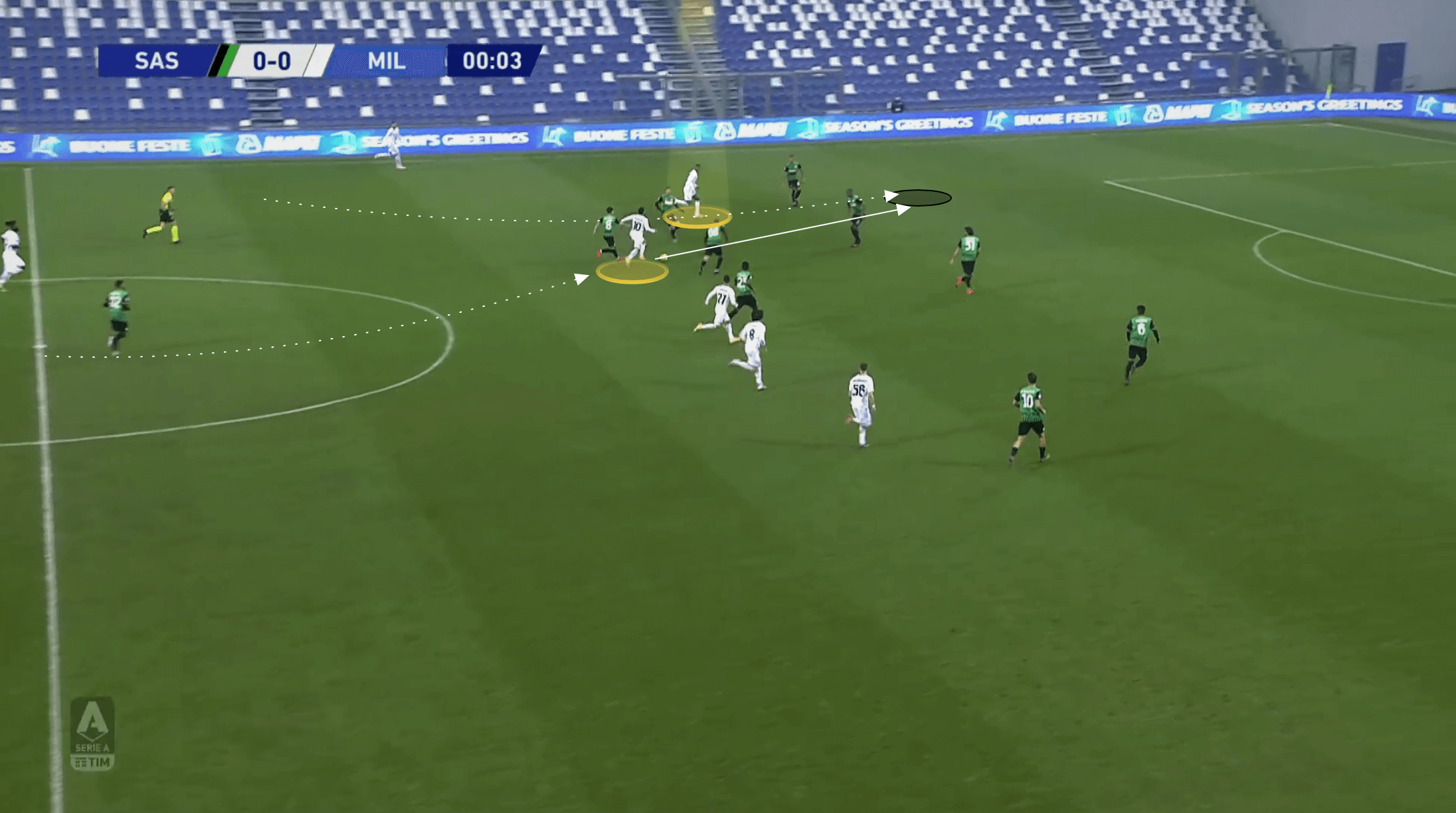
Bournemouth Kick Off Routines
Even before Scott Parker’s time with Bournemouth, the Cherries had grown somewhat of a reputation for thoughtful and well-rehearsed set-piece routines.
In their last season in the Premier League, the sheer volume of goals they scored from corners and free-kicks alone almost kept them up.
They have continued with this ingenuity from dead-ball situations during Parker’s reign, too.
Frankly, they are the most interesting team from kick-offs, with different routines evident throughout their performances this season.
Firstly, and similar to what we’ve seen from Atlético already, they will use wall passes to break past the press, keep the ball central, create space, and provide time for their attackers to push forward.
We can see such an example in the following image, which allows them to play past the sole opponent who stepped forward to press the kick-off.
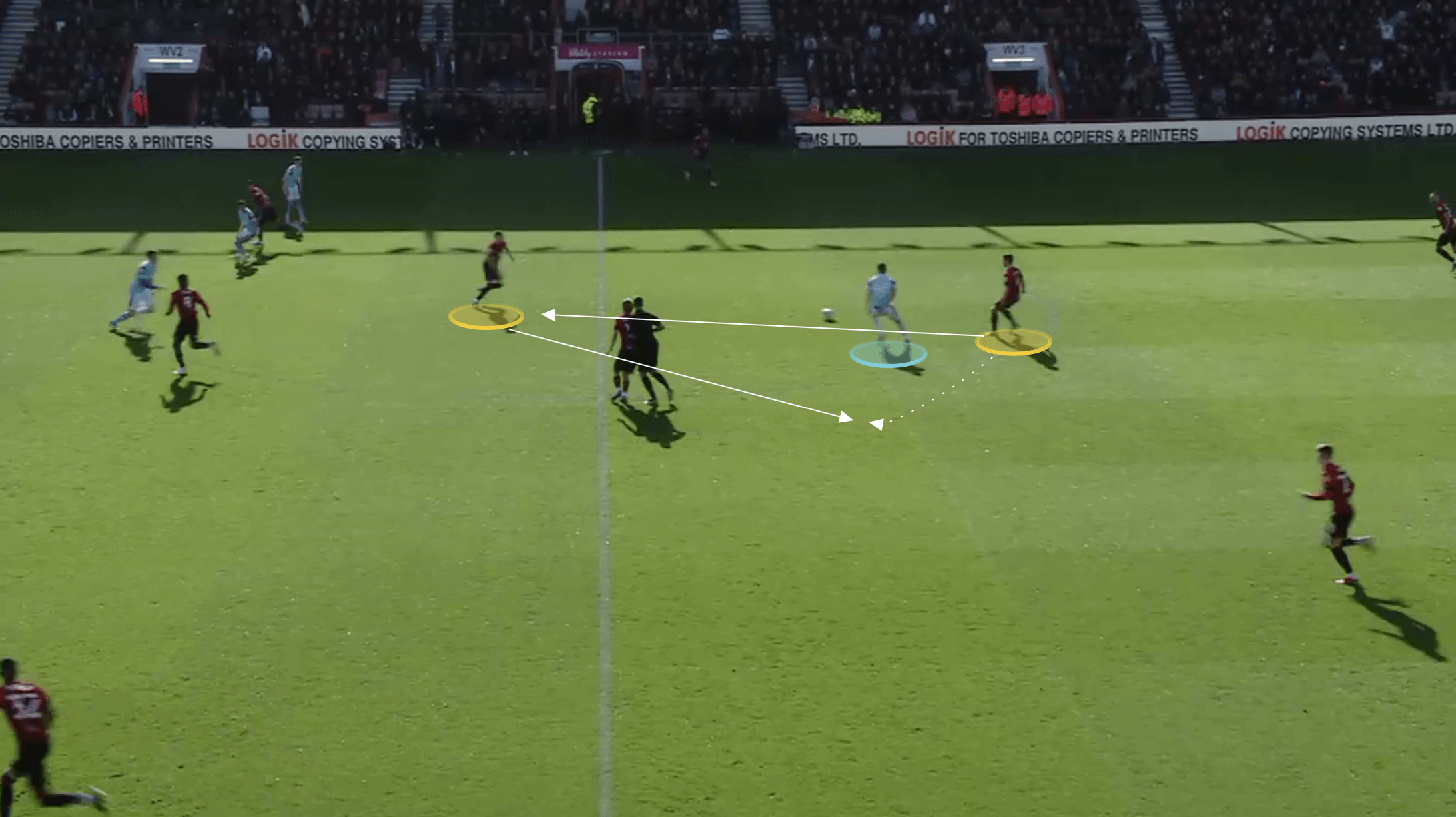
Once on the ball, the new ball-carrier was then able to drag another opponent forward, with a further Bournemouth player now spinning off into the space vacated and creating a chance for Bournemouth to continue playing forwards through the centre, taking out another opponent with this pass once more.
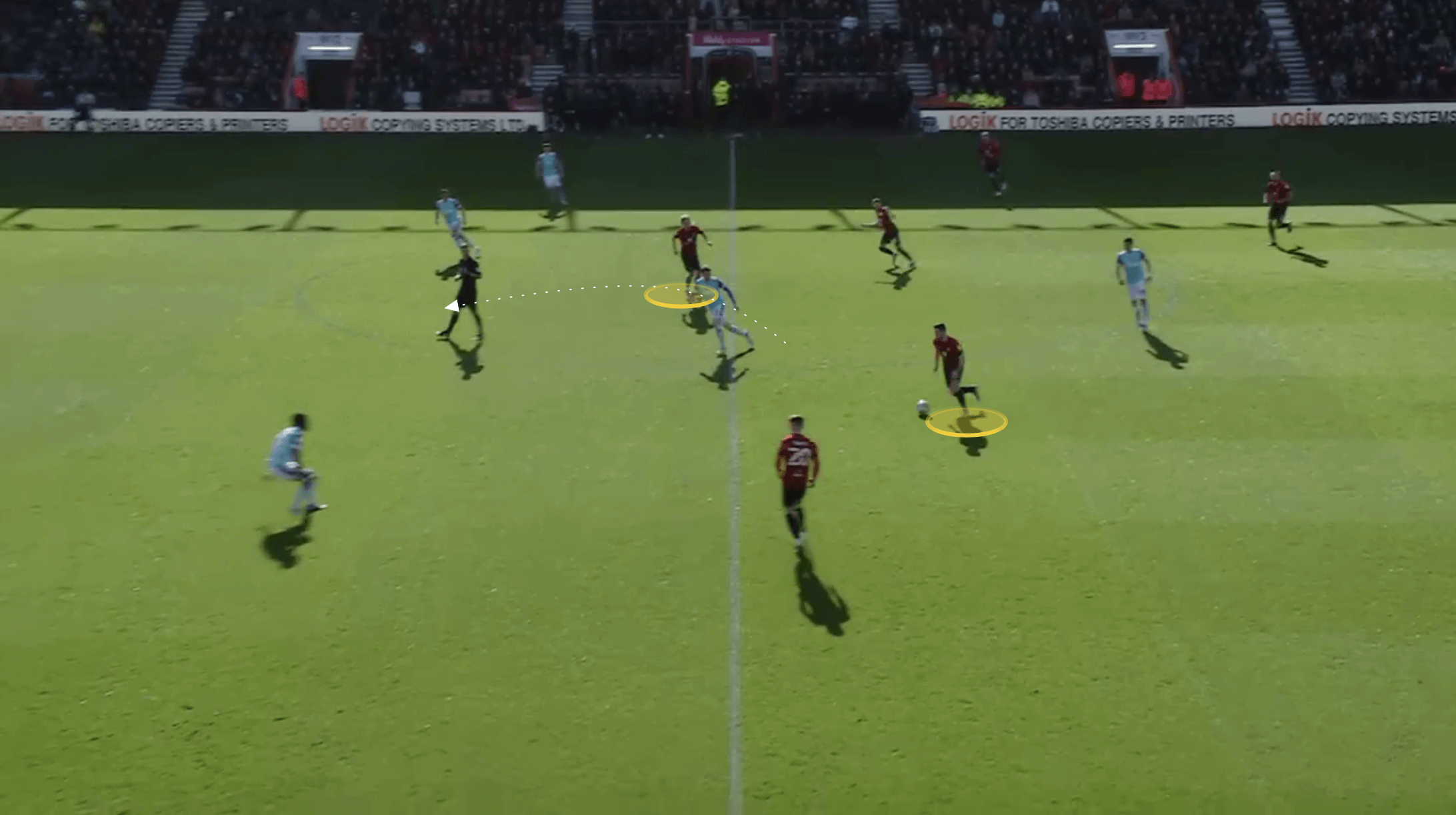
They are very direct and clearly looking to take the opportunity to try and steal a goal straight away, catching the opposition cold.
It’s unusual to see a team take such an approach, and as a result, it can be very effective.
Whilst the following image has a somewhat awkward angle, it’s important to see how the move starts.
Dominic Solanke simply knocks the ball forward, with his teammate Ryan Christie on the right side of the centre circle darting inside to latch onto this short pass.
It catches the opposition off guard.
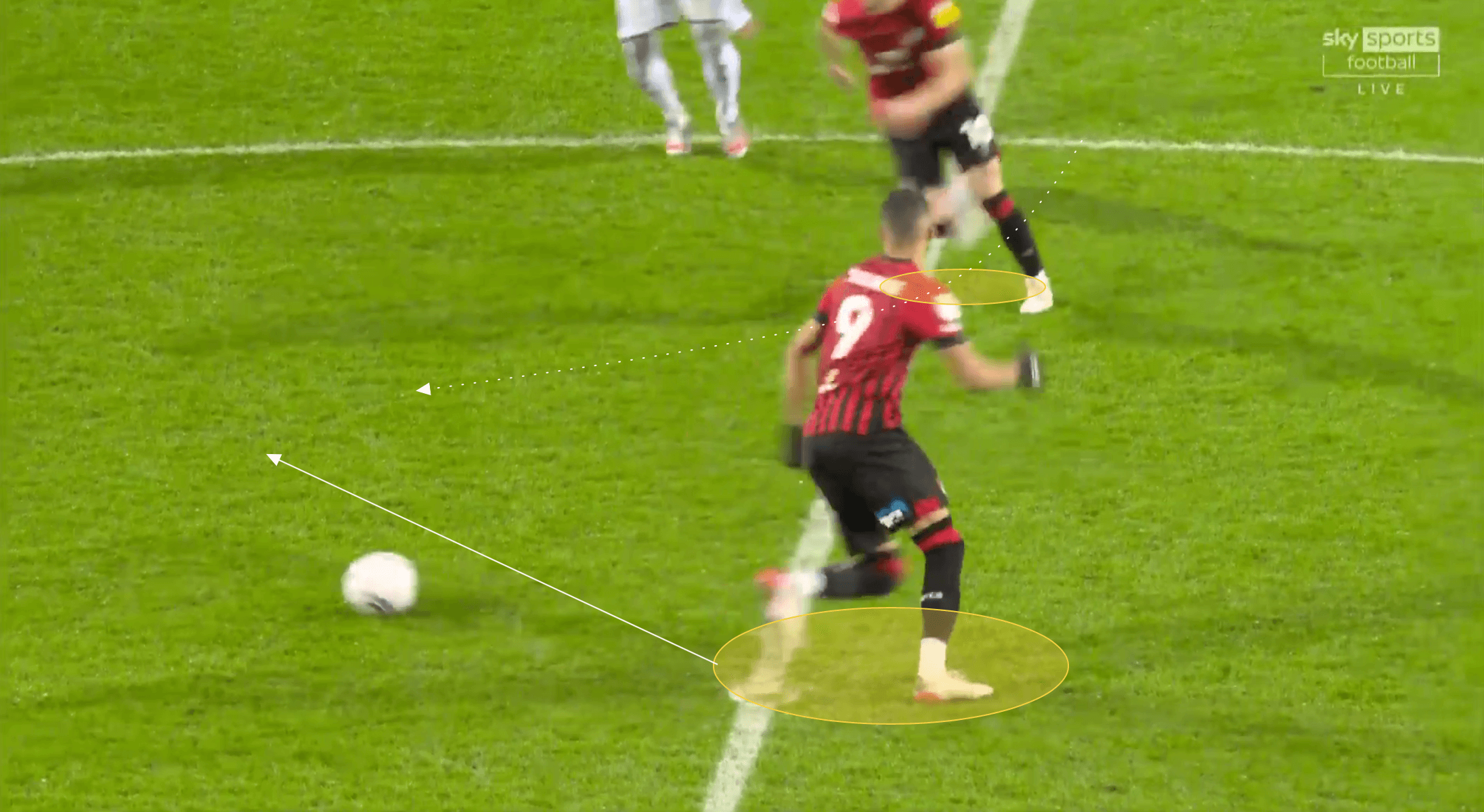
We can then see Siriki Dembélé quickly pushing forward, accessing the space behind the opposition’s midfield.
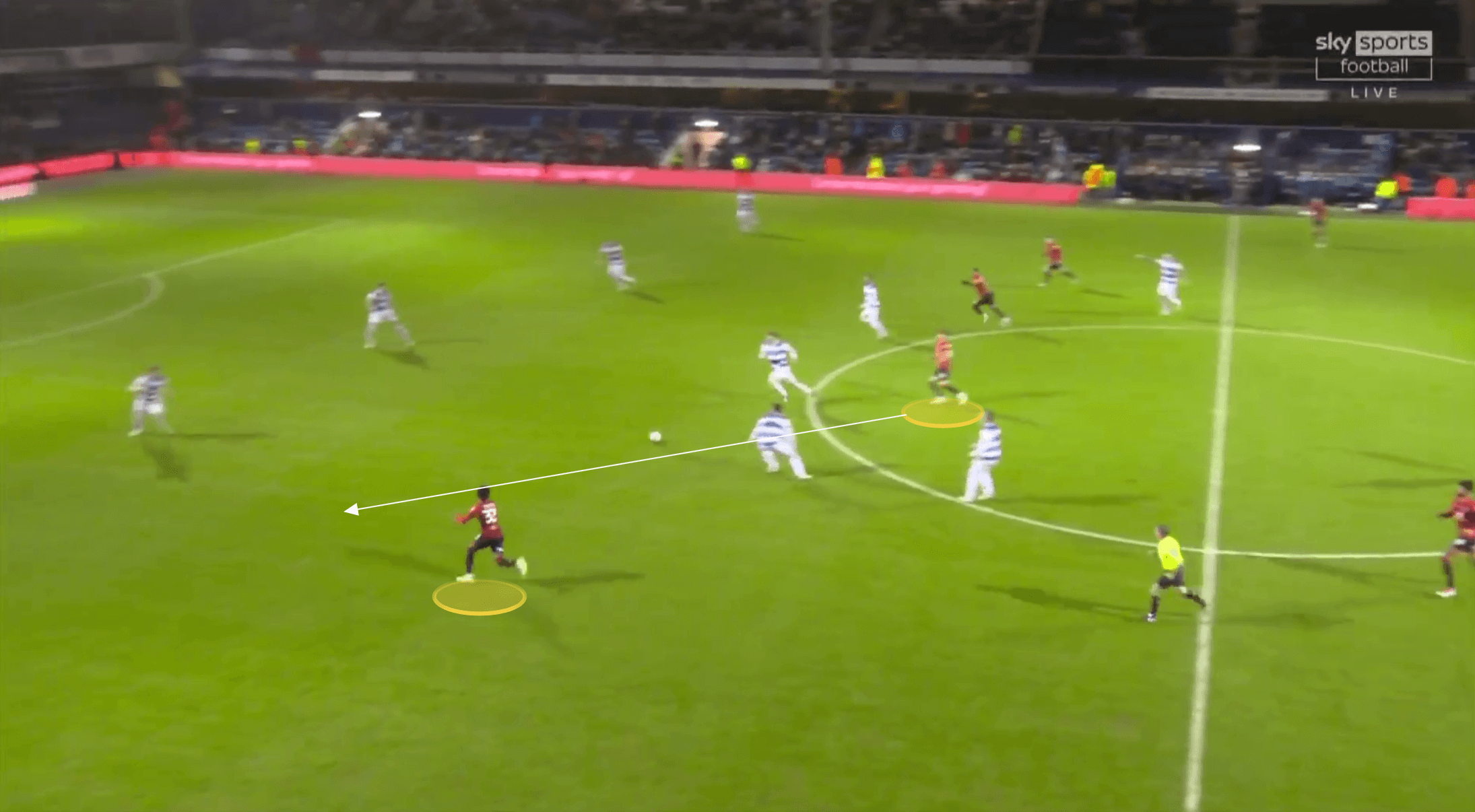
Whilst these smart routines didn’t quite create goalscoring opportunities, they have had a more potent routine used on several occasions that has led directly to a goal.
The move starts with the ball being played back to a central-midfielder just inside the centre-circle.
The player taking the kick-off loops his run towards the left, with the attacker in that position swapping with him, accessing the central space.
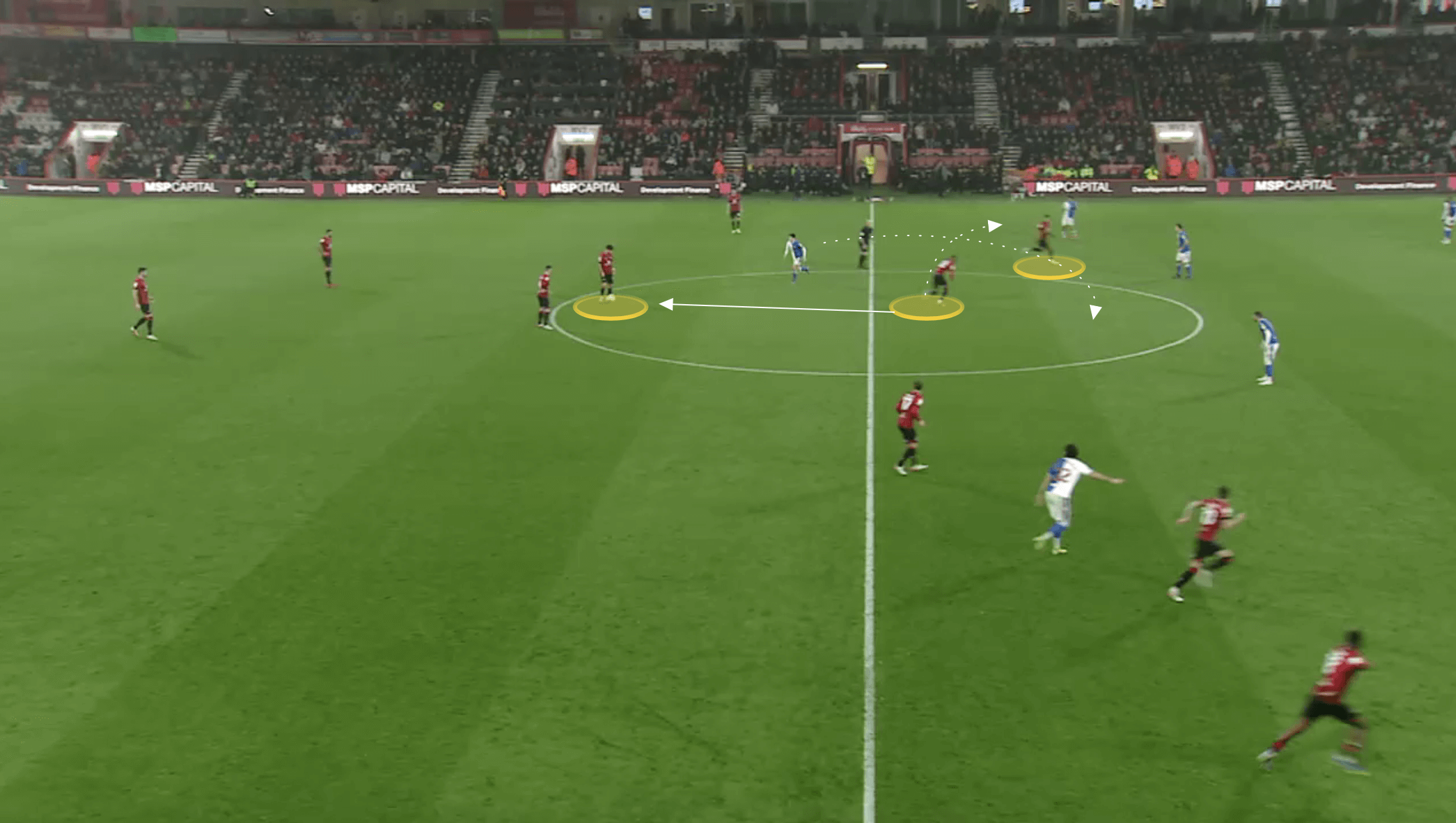
This little rotation creates enough space to get on the ball in this space but, importantly, provides time for Christie to push forward and find space just inside the opposition half, where he can then receive a pass.
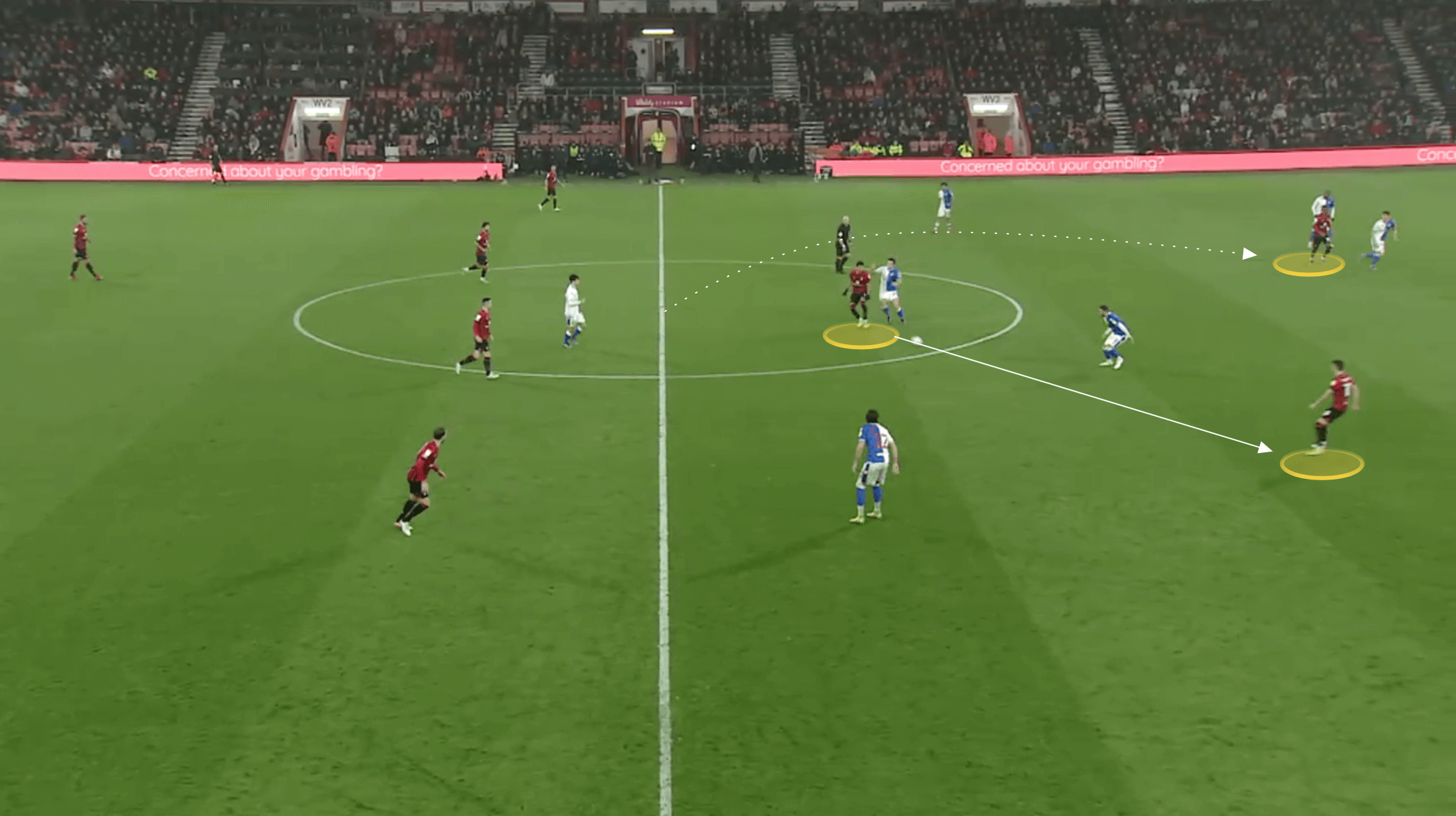
Once on the ball, he will lift it over the opposition defence, curving it towards the opposition goal and allowing the original kick-off taker to latch onto this pass.
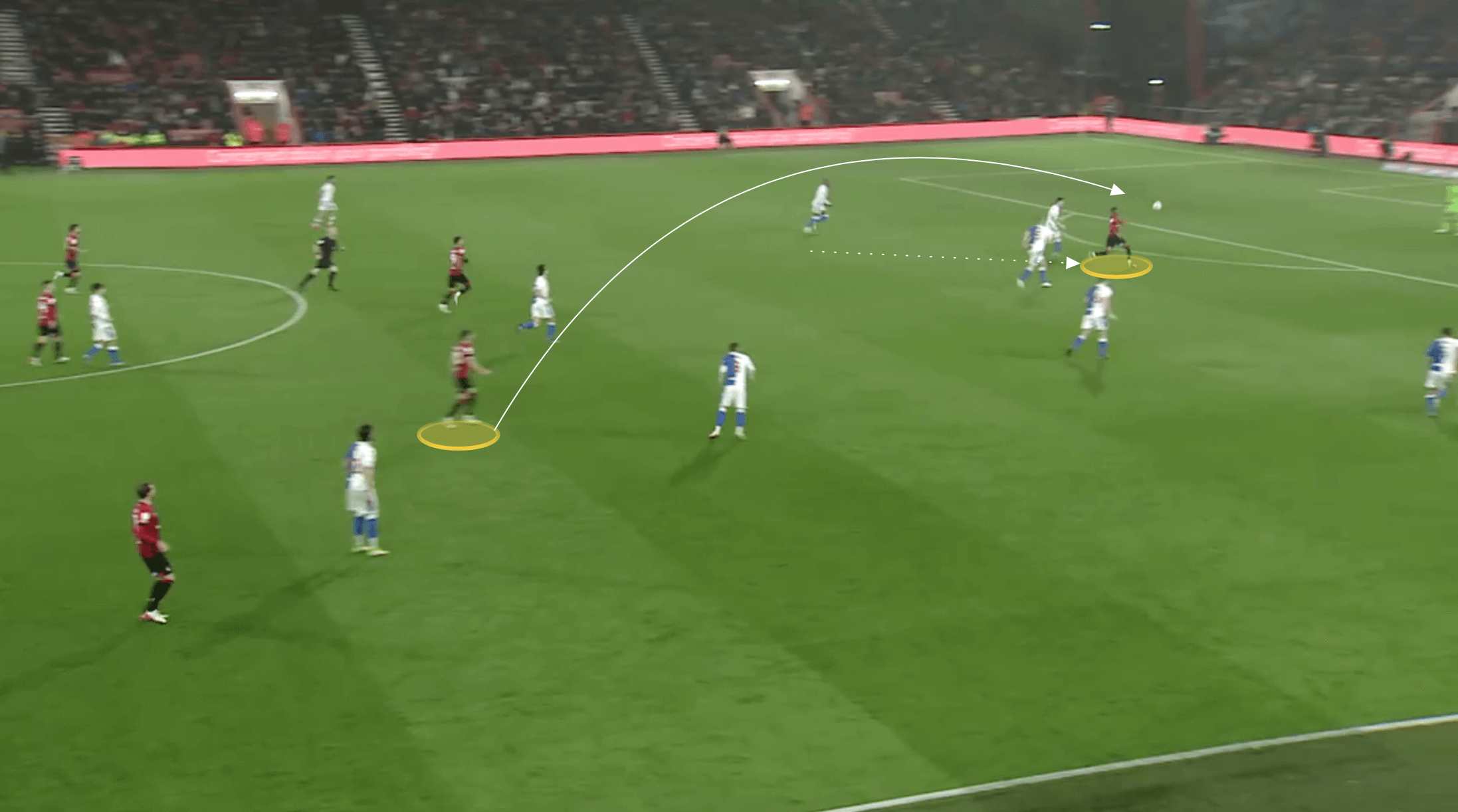
Whilst this specific chance didn’t culminate in a goal, an alternate take on this routine did lead to a goal from kick-off against Fulham at the tail end of 2021.
This time, a short interchange of passes led to Philip Billing lifting the ball into the path of Solanke, who struck the ball with power the first time past the stranded Fulham goalkeeper.
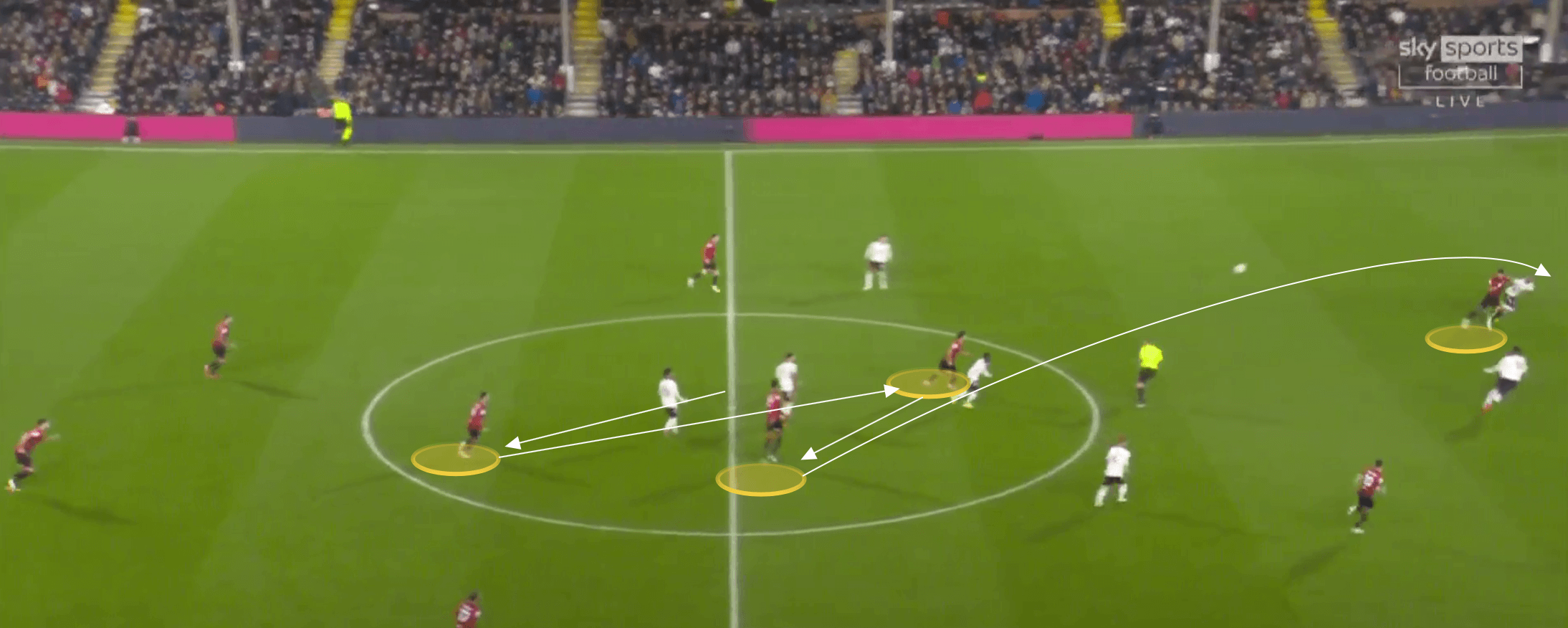
Conclusion
Some of these routines are simple and quick ways to either play past an initial press or secure possession in the opposition half, whilst others are more direct and clearly seeking to create a chance to score immediately from the kick-off.
The former are routines with a higher percentage, given they are naturally less difficult.
Still, there is no doubt that Watford, Milan and Bournemouth's routines, while varying in complexity, can still clearly create chances.
These are not frequent occurrences by any chance, but when they unfold and unfold successfully, they can look almost effortless in their execution.
Given this, it is surprising that more clubs aren’t being more adventurous with their approach to kick-offs and employing their own innovative routines, rather than just either aimlessly striking the ball forward hopefully as a winger pushes up the pitch or working the ball backwards and immediately engaging in build-up play.





Comments